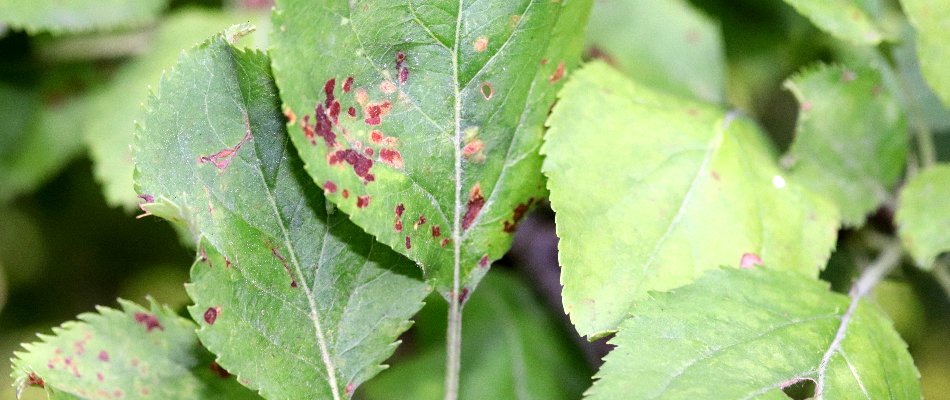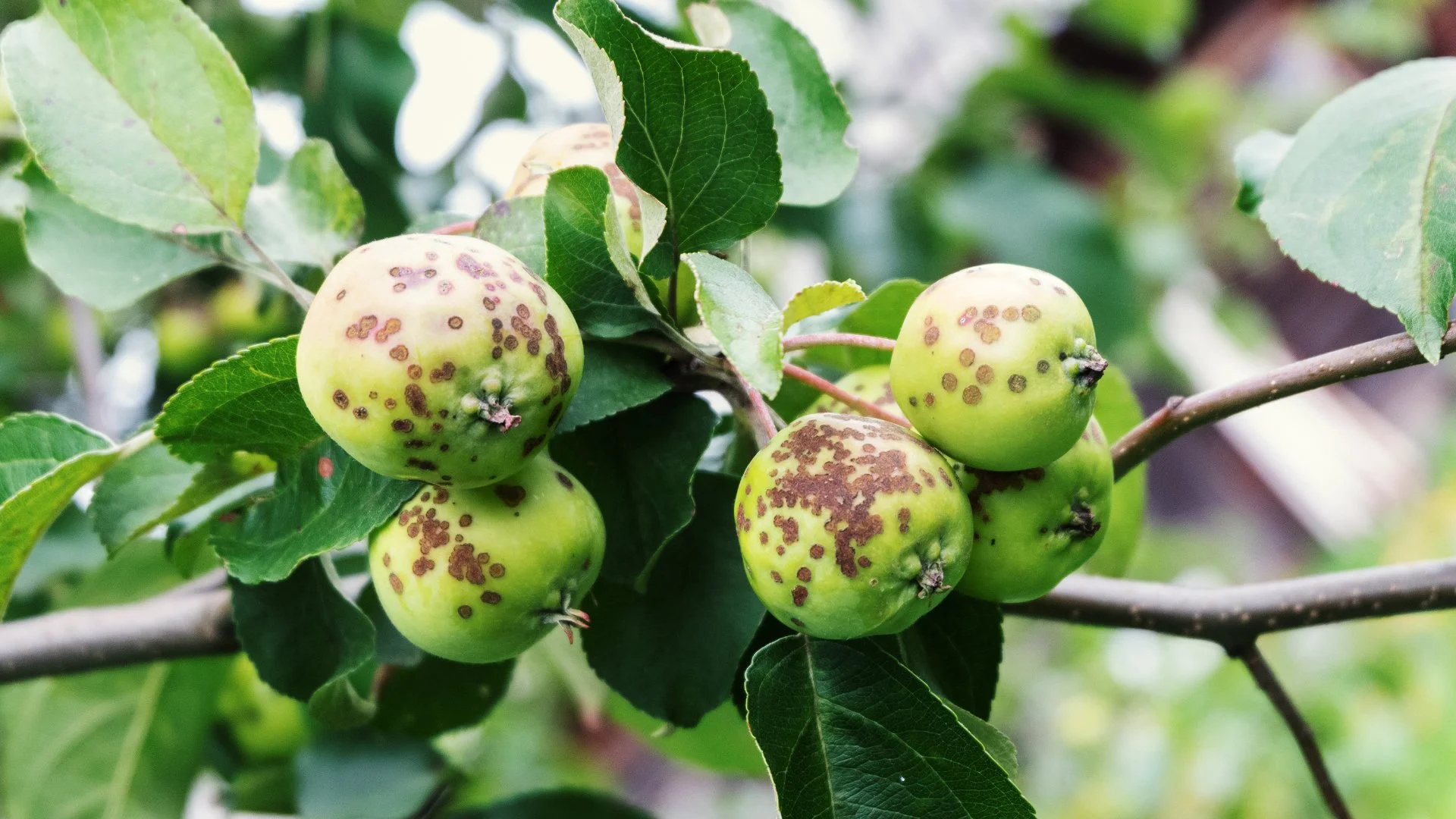Apple scab is a common fungal disease that affects apple trees in Ohio. This disease causes unsightly lesions on leaves and fruit, and it can significantly reduce the yield and quality of your apple harvest. The life cycle of apple scab begins in the spring when the fungus releases spores that infect newly emerging leaves and flowers. As the season progresses, the fungus continues to spread, causing more damage to the tree. To combat apple scab, it's crucial to invest in curative treatments at the first sign of infection. These treatments can help control the spread of the disease and protect your apple trees from further damage.
What is apple scab, and what damage does it cause?

Apple scab is a fungal disease that primarily affects apple trees, although it can also infect other fruit trees like crabapples and pears. This disease is caused by the fungus Venturia inaequalis, which thrives in cool, moist conditions. Apple scab appears as dark, velvety lesions on the leaves, particularly on the upper surface. As the disease progresses, the lesions enlarge and merge, causing the leaves to become distorted and eventually drop prematurely.
The fungus can also infect the fruit, causing circular, sunken lesions that resemble scabs, hence the name “apple scab.” In severe cases, the fruit may become deformed and crack, making it unfit for consumption or sale. Apple scab can significantly reduce the yield and quality of the harvest, leading to economic losses for apple growers. Additionally, the disease weakens the tree, making it more susceptible to other pests and diseases.
What is the life cycle of apple scab?
The life cycle of apple scab begins in the spring when the fungus overwinters in fallen leaves and infected fruit from the previous season. As the temperature rises and the leaves begin to emerge, the fungus releases spores that are carried by the wind to infect the newly emerging leaves and flowers. The spores germinate and penetrate the leaf surface, causing the characteristic lesions to appear.
As the season progresses, the fungus continues to spread, producing more spores that can infect other parts of the tree or be carried to nearby trees. The disease is most severe in cool, wet weather, as the moisture provides ideal conditions for the fungus to grow and spread. In late summer, the fungus produces a second type of spore that can overwinter on fallen leaves and infected fruit, allowing the disease to persist and reemerge in the following spring.
What should you do if your trees are infected with apple scab?
If you suspect that your apple trees are infected with apple scab, it's crucial to take action as soon as possible. Investing in curative treatments is the best way to control the spread of the disease and protect your trees from further damage. These treatments are designed to target the fungus and prevent it from spreading to other parts of the tree or nearby trees. By investing in curative treatments, you can protect your apple trees from further damage and ensure a healthy, productive harvest.
Give us a call today to schedule our tree and shrub disease control service.
At Free Spray Lawn Care, we can help protect your apple trees from apple scab via our tree and shrub disease control service. Our team of professionals will apply curative treatments to your trees to eliminate this disease before it can spread further. We offer this service to residential and commercial property owners in Mansfield, Wooster, Strongsville, and nearby areas in Ohio. Give us a call today at 419-529-5296 to schedule this service and say goodbye to this troublesome tree disease!



Comments (0)
Thanks for your comment!
Thanks for your feedback! Your comments have been successfully submitted! Please note, all comments require admin approval prior to display.
Error submitting comment!
There is a problem with your comment, please see below and try again.